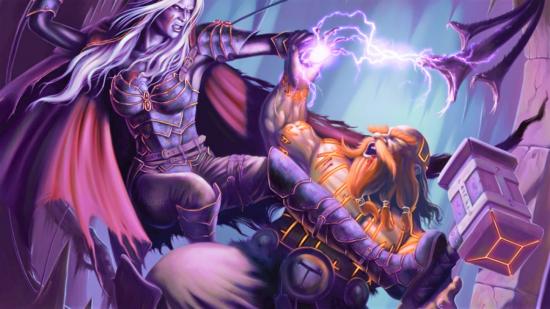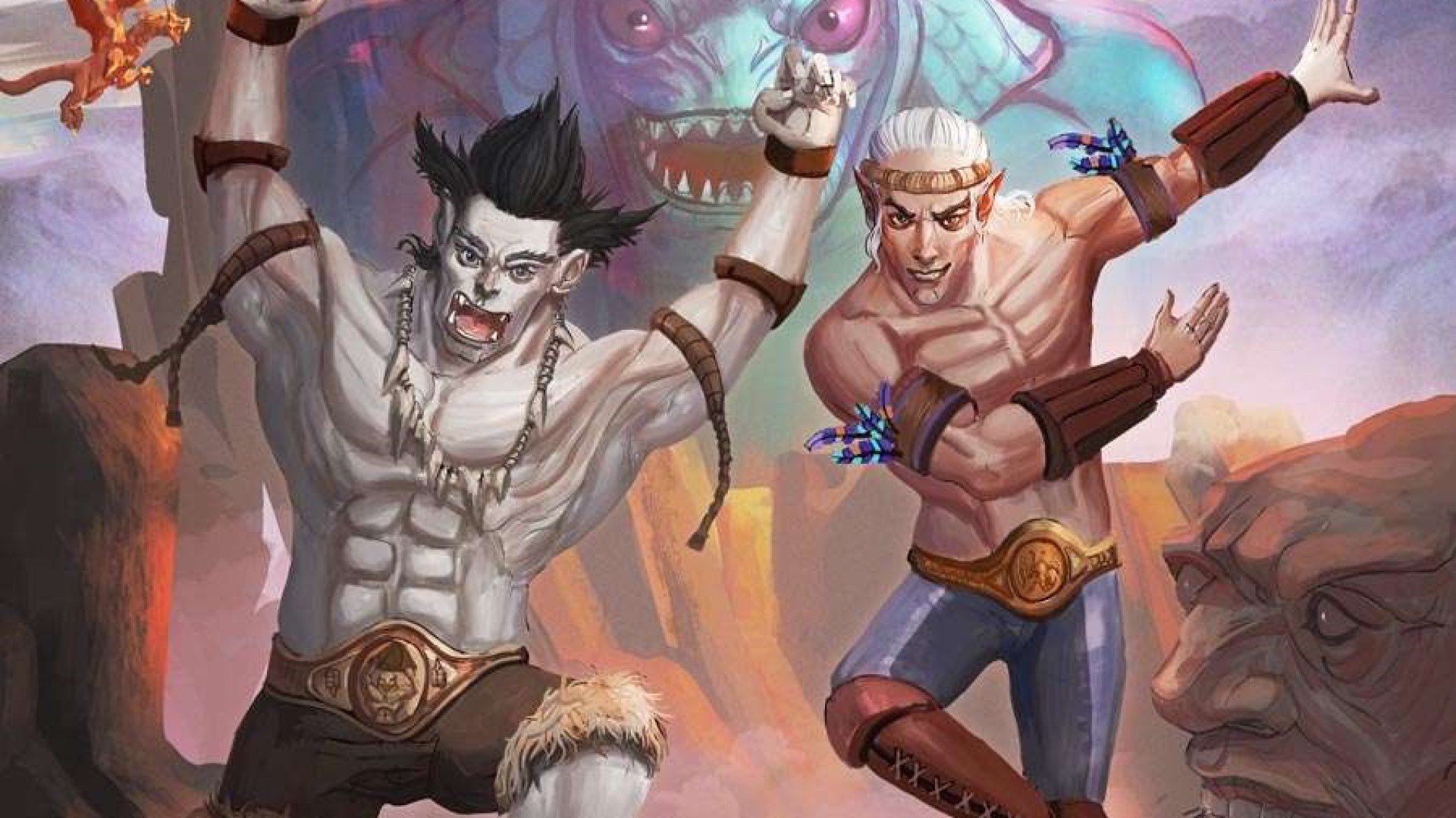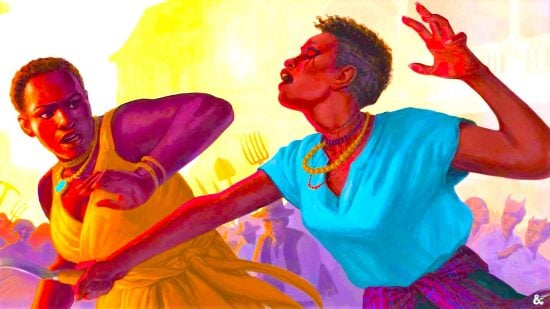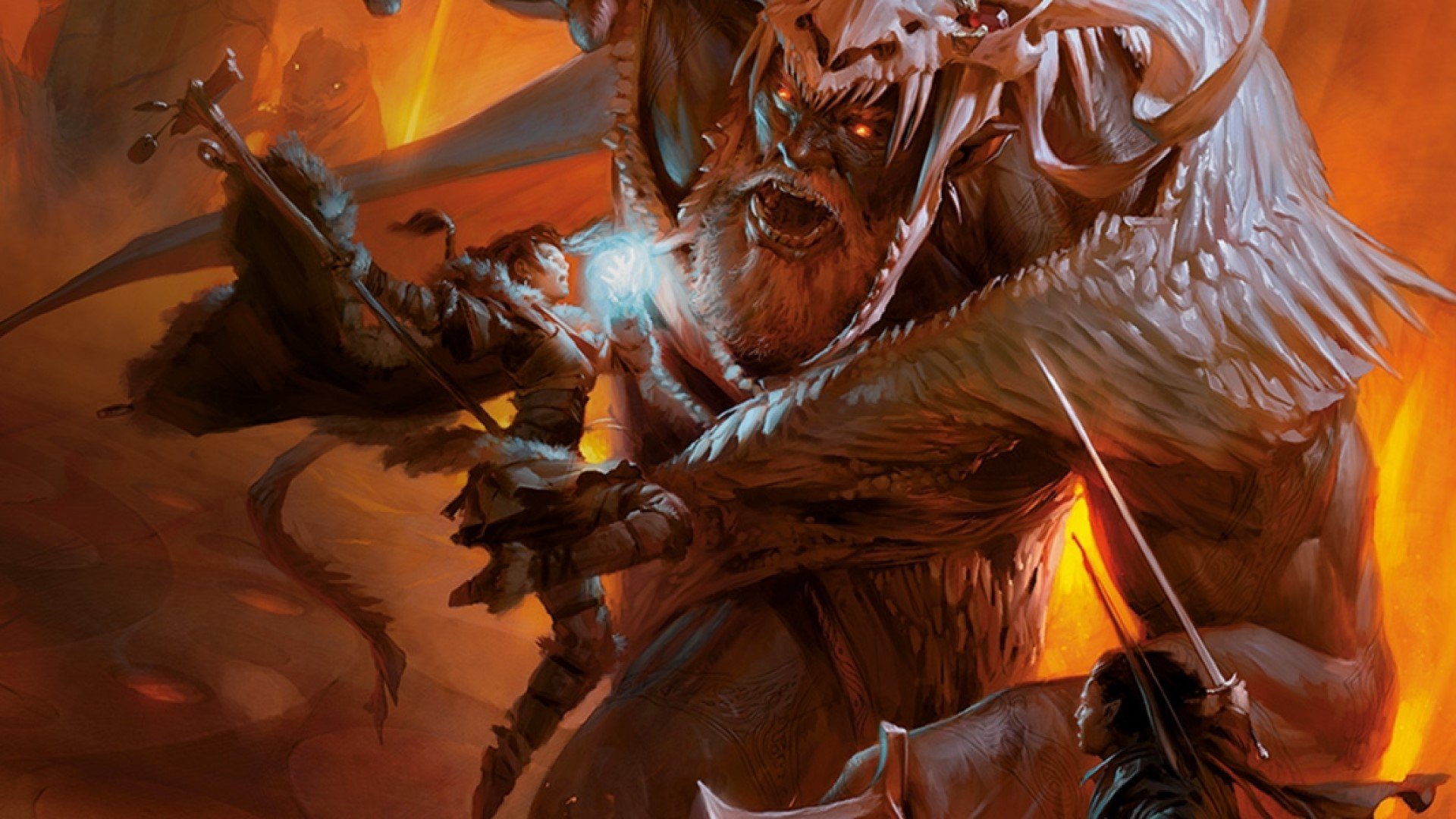When you need your D&D character to restrain an Owlbear or are itching to put a Beholder in a bear hug, the move you’re looking for is the DnD grapple 5e. Slinging a Fireball or swinging a sword at an oncoming monster is all very well and good, but sometimes you’d rather get up close and personal. If you need a rules refresher for the D&D grapple, you’ve come to the right place.
Your common, everyday 5e grapple is a type of attack move that deals no damage, but when successful it prevents an enemy from moving around. They now have the grappled condition, essentially removing their speed. Grappling can therefore be super useful in a number of D&D scenarios, from catching a fleeing DnD Rogue, to preventing a DnD monster from sounding an alarm or activating the snake pit trapdoor.
The grapple 5e rules are far simpler than the ones you’d find in previous editions of the game. That said, grappling is still one of the more niche combat moves. If you’re looking for a recap, here’s everything you need to know about how to grapple in D&D 5e. We’ll have you all filled in and ready to rumble in a jiffy.
Every DM needs to understand how a D&D grapple works, but it also helps for players to learn, too. So, once you’re done mulling over your favorite DnD classes, DnD races, DnD backgrounds, and DnD character builds, take a look at our comprehensive guide to the grapple.
Here’s everything you need to know about the DnD Grapple:
- Grapple 5e rules
- How to escape a DnD grapple
- How to make a DnD grapple more effective
- Grappler 5e feat
Grapple 5e rules
When you attempt to grapple, you’re taking a special kind of melee attack action. The rules are very similar to those used when trying to shove an enemy prone 5e.
You can only target creatures up to one DnD size larger than you, and you must have at least one hand free to grapple with (if you’ve got a sword and a DnD shield, then no dice). Instead of an attack roll, you make an Athletics check contested by your target’s Strength or Dexterity DnD stats. More specifically, they’ll choose one of two DnD skills to roll against your grapple: Athletics (Strength) or Acrobatics (Dexterity).
Once you’re grappling a creature, they have the grappled condition (makes sense), which means their speed becomes zero and no special spells or effects can increase their speed. The person doing the grappling can still move around, but at half speed unless they’re two sizes larger than the creature they’re grappling.
How to escape a DnD grapple
A creature can attempt to escape a grapple and end the grappled condition by using up their action. Essentially, when doing this, the original grapple check is rolled again – the grapple-ee tests their Athletics or Acrobatics against the Athletics of the grappler.
Action economy is everything in D&D, so spending a turn trying to wriggle out of an enemy’s grip isn’t the best use of your time. Luckily, there are other ways to escape a grapple.
According to the official rules, any effect that moves the grappled creature out of their grappler’s reach ends the grapple. For example, a DnD spell that forces movement like Thunderwave would get the job done. Similarly, a teleportation spell like Misty Step or Vortex Warp could separate the grappling pair.
There is one other, simpler alternative if you find yourself grappled. You could simply kill the creature grappling you. Grappled targets can still make DnD weapon attacks or cast 5e spells as normal with an opponent grappled – in fact, they can take basically any action that doesn’t require two hands. And now they’ve got a very good reason to want to hit the grappler.
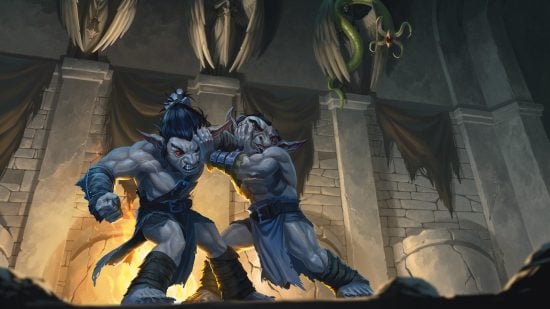
How to make a DnD grapple more effective
On its own, a grapple is more of an inconvenience than a show-stopper. Grappled creatures can still do most things other than move, so why bother? Grapples are certainly worth it – if you combine them with other DnD conditions.
If you’re still determined to force a dangerous monster into a headlock with a grapple, consider finding a way to restrain your foe. We recommend knocking them prone, too – both conditions give the target disadvantage on attacks. Plus, you’ll have advantage when attacking them. And if they’re already grappled, they’ll find it very difficult to escape their predicament.
Grappler 5e feat
If grappling is something you’re super keen on, it could be worth taking the Grappler feat. The only prerequisite for this feat is that you have a strength stat of at least 13. While Grappler is certainly not among the best 5e feats, it still has its uses.
Basically, the Grappler feat means you have advantage against your grappled foe. Grappler also gives you the chance to pin a creature you have grappled, giving both you and it the restrained condition.
But, unfortunately, that latter move probably isn’t worth doing most of the time, unless you don’t mind dramatically lowering your own damage output to give your party a chance to wail on an enemy. If you’re really trying to go for a highly optimized D&D character build, it’s probably not worth taking Grappler over an ability score increase. But it could be fun on a character who’s like… a pro wrestler or something.
For more Dungeons and Dragons rules, here’s how attunement 5e works. We can also recommend some handy DnD character creators and DnD character sheets, or even a virtual tabletop for digital DnD campaigns.
